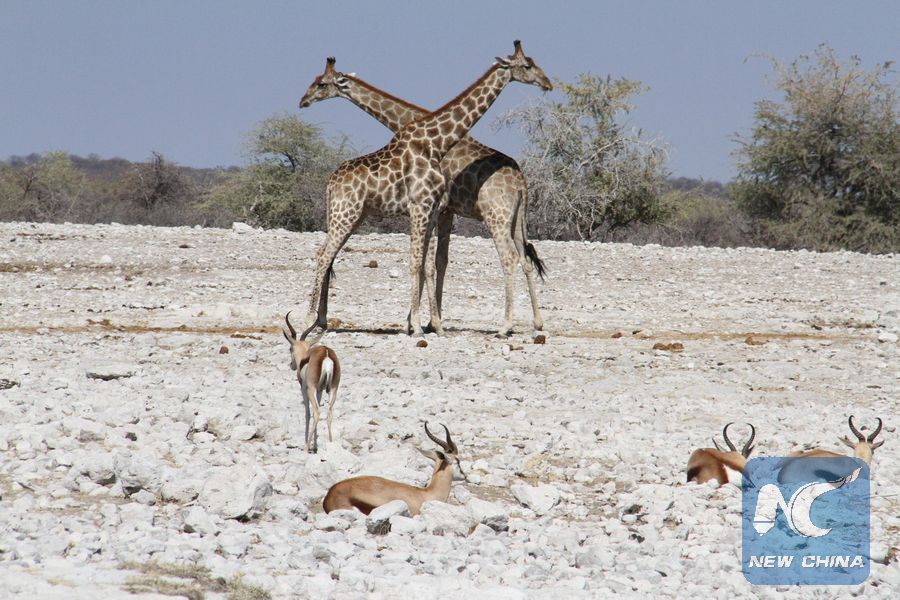
Giraffes and steenboks are seen at the Etosha National Park, northwestern Namibia, July 30, 2016. The park spans an area of 22,270 square kilometers and gets its name from the Etosha pan, a large salt pan. The park is home to hundreds of species of mammals, birds and reptiles. (Xinhua/Wu Changwei)
WINDHOEK, May 18 (Xinhua) -- Namibia's minister of environment and tourism, Pohamba Shifeta, said assistance from China in protecting wildlife and combating poaching especially in Namibia's national parks have been a success.
"Our Chinese counterparts are doing exceptionally well. They have donated equipment as well as funds for protection of wildlife in our country," he told Xinhua in a recent interview.
"Some of the funds have been used to deploy more officers to patrol the areas that are known for poaching, and equipment donated by the Chinese are also already in use," he said.
The official said China-Namibia cooperation in wildlife protection also includes exchanging experiences in conservation promotion and preservation of national heritage.
"We refer to this as being a good mutual partnership. Now I can safely say that China has contributed massively towards wildlife protection in the country. And we as Namibians must always make good use of what we are offered," Shifeta said, adding that China has also recently donated wildlife protection materials including pick-up vehicles, tents, sleeping bags and mosquito nets.
Namibian officials said last year that for the first time in years, Namibia recorded a decrease in the poaching of rhinos and elephants, and that Namibia's elephant population had showed a continuous growing trajectory.
Since 1988, Namibia has created 82 communal conservancies covering nearly 20 percent of the country's area and encompassing approximately 189,000 community members, or almost 10 percent of Namibia's population. Formed and run by local people, these conservancies offer protected space for wild animals outside official protected areas.

